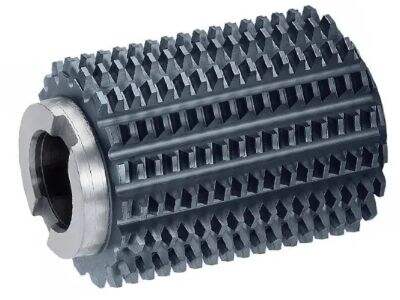When machining gears with high-speed steel (HSS) tools, it is important to obtain a smooth and bright tool surface to enable high-quality gear production. But occasionally the surface finish could not be as good as we hope. On the other hand, it could be due to any data loss and don’t be panic- we’ve got you covered. Below are some solutions for troubleshooting a poor surface finish in HSS gear cutting.
Common reasons for bad surface finish in HSS Gear Cutting are:
A dull or worn tool is a common cause of poor surface finish. The cutting tool must be sharp or it won't be able to cut the gear material cleanly, since dull tools tend to leave a rough surface finish. Another reason is that the incorrect cutting speed or feed rate could be employed. If the speed is too high or too slow, or if the feed rate is improper, it can result in poor surface finish. You want to ensure that the cutting tool is in good shape, and the cutting parameters are properly assigned.
Methods to improve tooling geometry and parameters to enhance surface quality:
You may optimize the tool geometry and process parameters for better surface finish in HSS gear cutting. This includes selecting the proper tool shape, angle and size for the specific application. You also need to set the speed and feed rate for the appropriate material you are cutting. By maximizing these variables, a more improved surface quality of the gears is attainable.
Analyzing the effects of Velocity: surface finish
The surface finish of gears depends primarily up on the cutting speed and feed rate. Cutting at a higher speed may result in a polished surface, but at a lower speed one may get rough. An increase in feed rate will allow you to achieve an improved surface quality as well, but the higher the feed rate, the more tools wear and finish may be damaged. Optimal tool life and surface finish depend on a delicate balance between cutting speed and feed rate.
Addressing chip control and lubrication issues in HSS for gear cutting:
Chip control and lubrication are two important aspects and can affect the surface finish in a gear cutting process. Good chip control reduces the risk of chips disturbing the cutting process and defecting the surface. Neben diesen „technischen“ Aspekten kann man mit dem richtigen Schmierstoff auch das Schneiden flacher gestalten und die Reibung verringern – auch für eine bessere Oberflächenrauheit. By examining chip control and lubrication you can address this and attain a better surface finish.
Surface finish improvement techniques through tool maintenance and selection:
You need to keep your cutting tools in good condition to get a good surface finish. By frequently examining and sharpening the tools you will avoid their blunting and becoming worn, producing low surface quality. Besides, it's all about the right tool for the right job. The type of HSS tool depends on the specific cutting operation, and using the right tool for the job can have a major impact on the surface finish. Reflectance of the machined surface. The p-values are calculated using Equations If the symmetrical regression band limits are to be obtained, the standard errors are computed using their optimal values.
Table of Contents
- Common reasons for bad surface finish in HSS Gear Cutting are:
- Methods to improve tooling geometry and parameters to enhance surface quality:
- Analyzing the effects of Velocity: surface finish
- Addressing chip control and lubrication issues in HSS for gear cutting:
- Surface finish improvement techniques through tool maintenance and selection:

 EN
EN
 AR
AR
 BG
BG
 HR
HR
 CS
CS
 DA
DA
 NL
NL
 FI
FI
 FR
FR
 DE
DE
 EL
EL
 HI
HI
 IT
IT
 JA
JA
 KO
KO
 NO
NO
 PL
PL
 PT
PT
 RO
RO
 RU
RU
 ES
ES
 SV
SV
 TL
TL
 IW
IW
 ID
ID
 LT
LT
 SR
SR
 SK
SK
 UK
UK
 VI
VI
 HU
HU
 TH
TH
 TR
TR
 FA
FA
 MS
MS
 GA
GA
 AZ
AZ
 BN
BN



